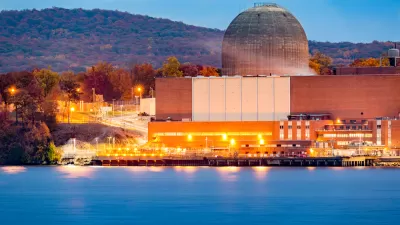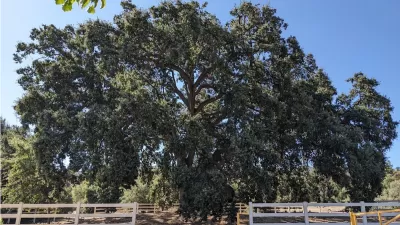The B Reactor at the decommissioned Hanford Nuclear Site in Washington State is up to become a national landmark for its role in producing uranium for The Manhattan Project.
"The reactor is currently owned by the Department of Energy, which has indicated it will wait only until 2009 before deciding whether to "cocoon" it in concrete and steel for the next 75 years until a final decision is made on how dispose of it. Five of the nine former production reactors at Hanford already have been stabilized this way.
Park Service officials have been reluctant to move quickly on a new national park because of budgetary constraints. The Energy Department has indicated it was not in the museum business and was not interested in operating historic sites for tourists.ave the opportunity to reflect on and learn from the important lessons this facility has to offer."
The initial plutonium produced at the reactor was used in the world's first nuclear explosion at the Trinity Test Site in New Mexico and in the "Fat Man" bomb dropped on Nagasaki. The reactor now sits abandoned on the banks of the Columbia River. Though the reactor core is still radioactive it is shielded, and the rest of the reactor building and grounds cleaned of contamination. The reactor is open for occasional tours."
FULL STORY: Make B Reactor a historic landmark, Murray urges advisory board

Planetizen Federal Action Tracker
A weekly monitor of how Trump’s orders and actions are impacting planners and planning in America.

Restaurant Patios Were a Pandemic Win — Why Were They so Hard to Keep?
Social distancing requirements and changes in travel patterns prompted cities to pilot new uses for street and sidewalk space. Then it got complicated.

Map: Where Senate Republicans Want to Sell Your Public Lands
For public land advocates, the Senate Republicans’ proposal to sell millions of acres of public land in the West is “the biggest fight of their careers.”

Maui's Vacation Rental Debate Turns Ugly
Verbal attacks, misinformation campaigns and fistfights plague a high-stakes debate to convert thousands of vacation rentals into long-term housing.

San Francisco Suspends Traffic Calming Amidst Record Deaths
Citing “a challenging fiscal landscape,” the city will cease the program on the heels of 42 traffic deaths, including 24 pedestrians.

California Homeless Arrests, Citations Spike After Ruling
An investigation reveals that anti-homeless actions increased up to 500% after Grants Pass v. Johnson — even in cities claiming no policy change.
Urban Design for Planners 1: Software Tools
This six-course series explores essential urban design concepts using open source software and equips planners with the tools they need to participate fully in the urban design process.
Planning for Universal Design
Learn the tools for implementing Universal Design in planning regulations.
Heyer Gruel & Associates PA
JM Goldson LLC
Custer County Colorado
City of Camden Redevelopment Agency
City of Astoria
Transportation Research & Education Center (TREC) at Portland State University
Camden Redevelopment Agency
City of Claremont
Municipality of Princeton (NJ)





























